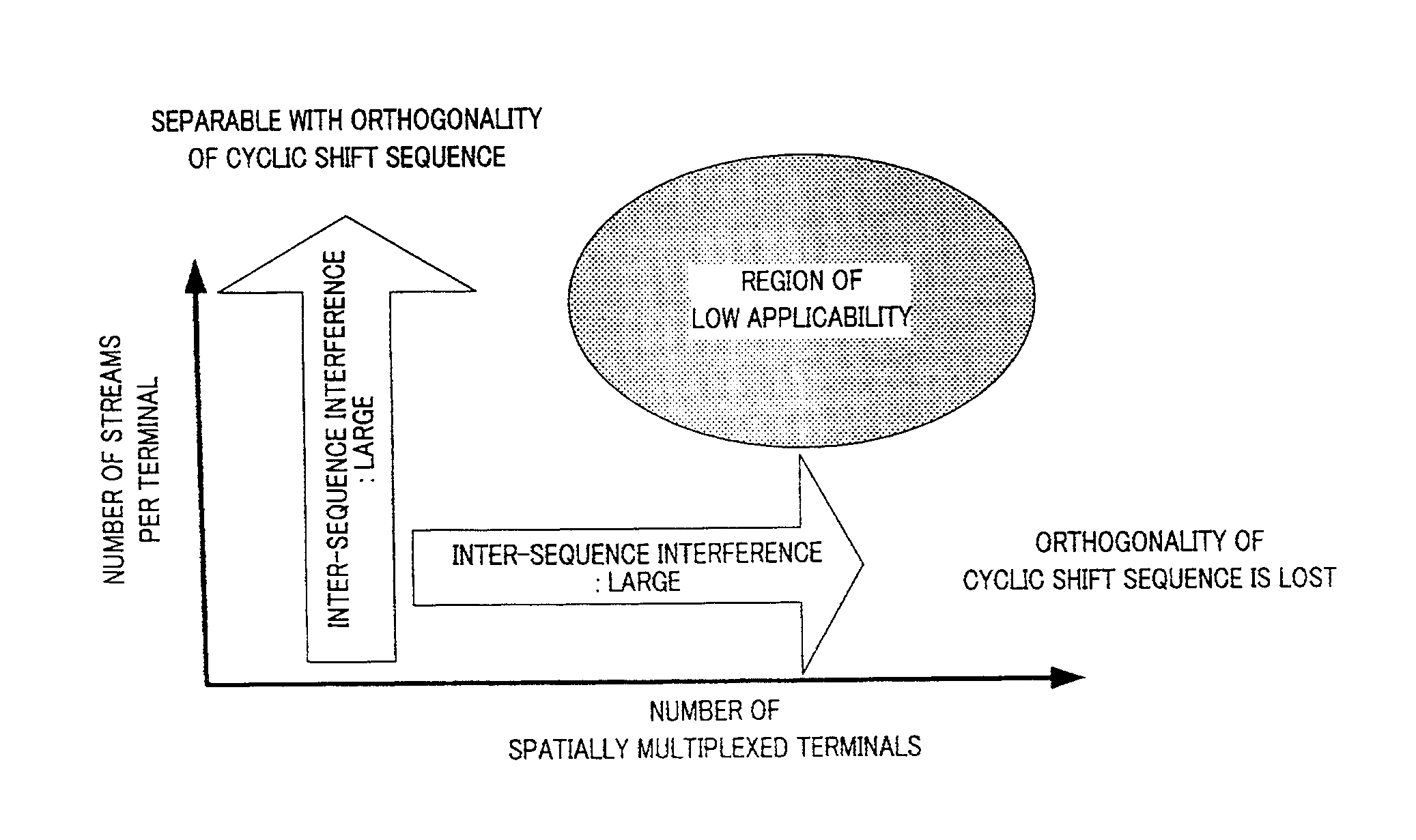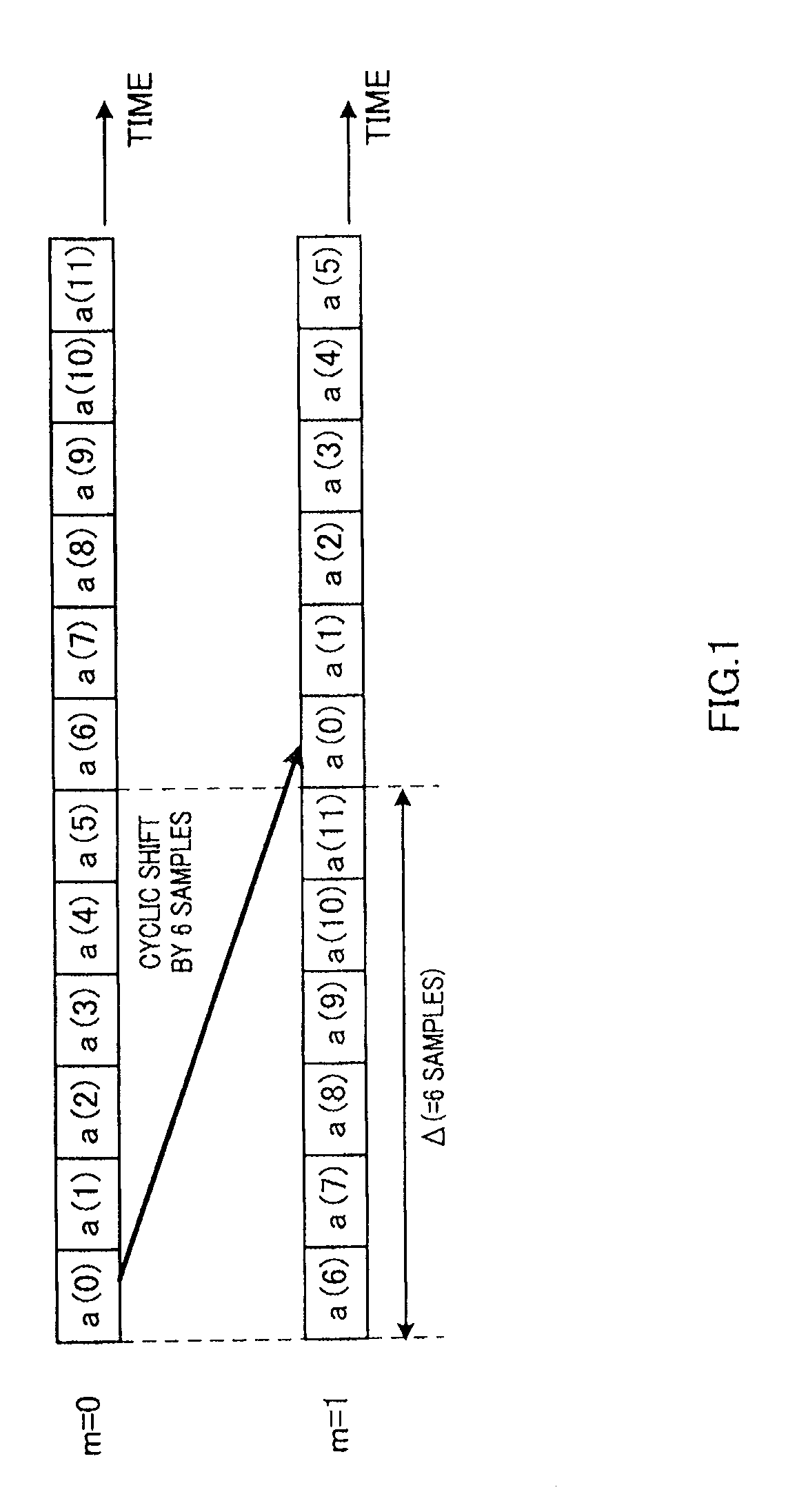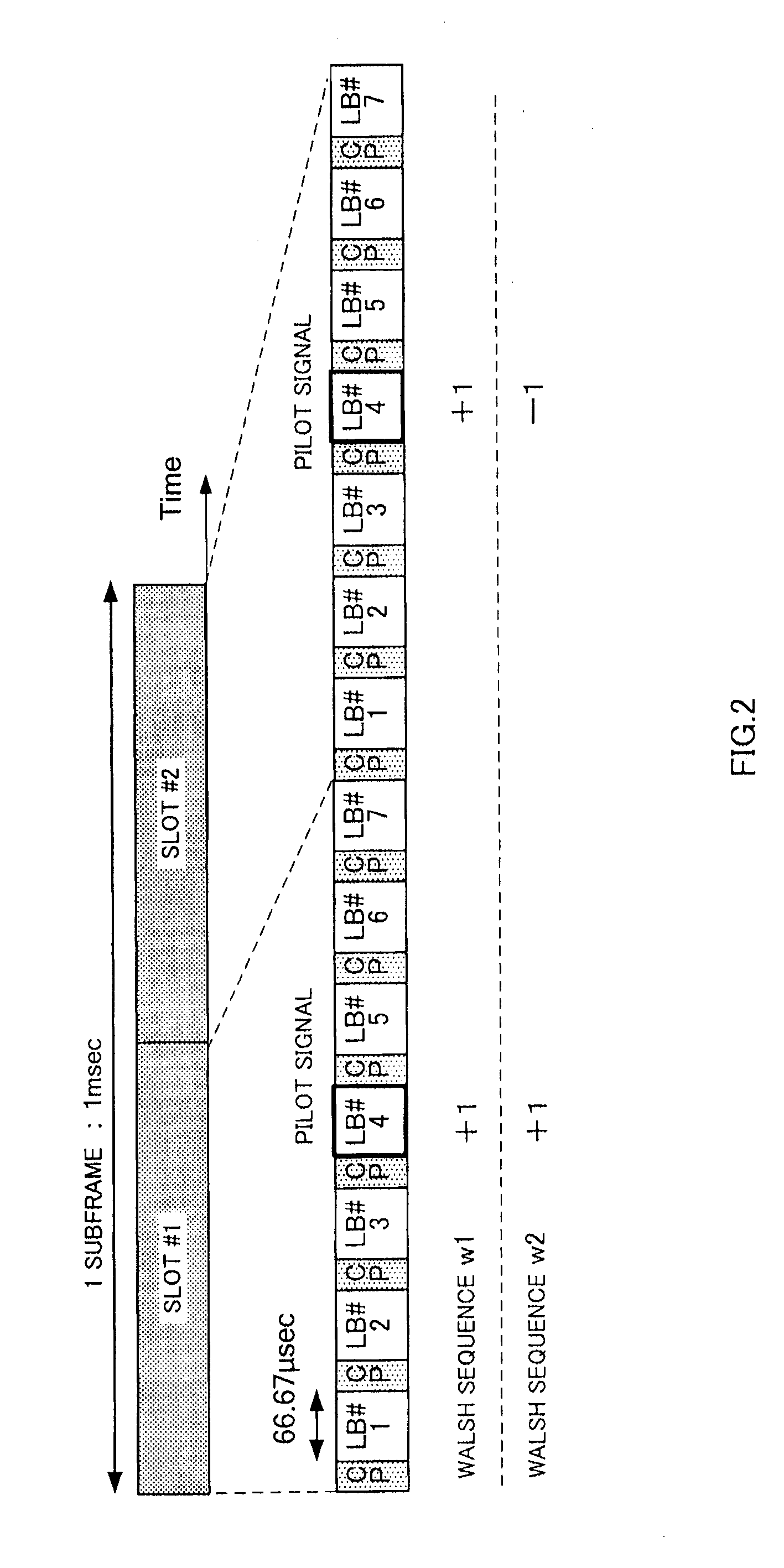Terminal station apparatus, base station apparatus, transmission method and control method
a technology of base station and terminal station, which is applied in the direction of orthogonal multiplex, multiplex communication, wireless communication, etc., can solve the problems of increasing inter-sequence interference and certain degree of inter-sequence interference, and achieve the effect of reducing inter-sequence interference in pilot signals
- Summary
- Abstract
- Description
- Claims
- Application Information
AI Technical Summary
Benefits of technology
Problems solved by technology
Method used
Image
Examples
embodiment 1
[0046]Viewpoints of the present invention will be described first, before describing a more specific configuration and operation of an embodiment.
[0047]In SU-MIMO, one terminal simultaneously transmits data signals using a plurality of streams. Here, suppose “streams” are signals transmitted from antenna ports associated with data signals or pilot signals (or communication channel in the space). Streams are also called “layers.” Furthermore, in vectors (precoding vectors) used for weight control under study for demodulation pilot signals on an LTE-A uplink, streams and precoding vectors are associated in a one-to-one correspondence.
[0048]On the other hand, in MU-MIMO, a plurality of terminals transmit data signals with one or a plurality of streams simultaneously.
[0049]At this time, in SU-MIMO, inter-sequence interference of pilot signals increases as the number of streams per terminal increases, while in MU-MIMO, inter-sequence interference of pilot signals increases as the number ...
embodiment 2
[0129]Embodiment 1 assumes that information on the correspondence relationship between a stream number and a Walsh sequence and information on the cyclic shift sequences are reported per scheduling. To be more specific, in LTE, the base station selects a cyclic shift amount of each cyclic shift sequence from among eight types (cyclic shift amounts defined in LTE) and reports the selected cyclic shift amount to the terminal using three bits. Furthermore, in LTE-A, studies are being carried out on a base station selecting any one of w1 and w2 as a Walsh sequence and reporting the selected sequence to the terminal using one bit.
[0130]Therefore, according to Embodiment 1, the terminal selects a cyclic shift sequence and a Walsh sequence from among 16 types of combinations; eight types of cyclic shift sequences and two types of Walsh sequences. However, in a real environment of LTE-A uplink, the number of streams assumed as the number of streams used in SU-MIMO or MU-MIMO is four at most...
modification example 1
[0167]While LTE-A terminals use Walsh sequence w1 or w2, LTE terminals are not assumed to use Walsh sequences and have no requirements regarding Walsh sequences, which is equivalent to always using Walsh sequence w1. Here, assuming an environment in which LTE terminals and LTE-A terminals coexist, while the probabilities of LTE-A terminals using Walsh sequence w1 and w2 are substantially the same, the probability of LTE terminals using Walsh sequence w1 is higher. Therefore, when Walsh sequence w1 is used, the probability of inter-sequence interference occurring in pilot signals is higher than when Walsh sequence w2 is used.
[0168]Thus, among pairs of a cyclic shift sequence and a Walsh sequence in a correspondence relationship (pattern) stored in the operating sequence identification table, the number of pairs of Walsh sequence w1 is made to be smaller than the number of pairs of Walsh sequence w2. Here, Walsh sequence w1 is [1 1] and is a sequence, all elements of which are compose...
PUM
 Login to View More
Login to View More Abstract
Description
Claims
Application Information
 Login to View More
Login to View More - R&D
- Intellectual Property
- Life Sciences
- Materials
- Tech Scout
- Unparalleled Data Quality
- Higher Quality Content
- 60% Fewer Hallucinations
Browse by: Latest US Patents, China's latest patents, Technical Efficacy Thesaurus, Application Domain, Technology Topic, Popular Technical Reports.
© 2025 PatSnap. All rights reserved.Legal|Privacy policy|Modern Slavery Act Transparency Statement|Sitemap|About US| Contact US: help@patsnap.com



